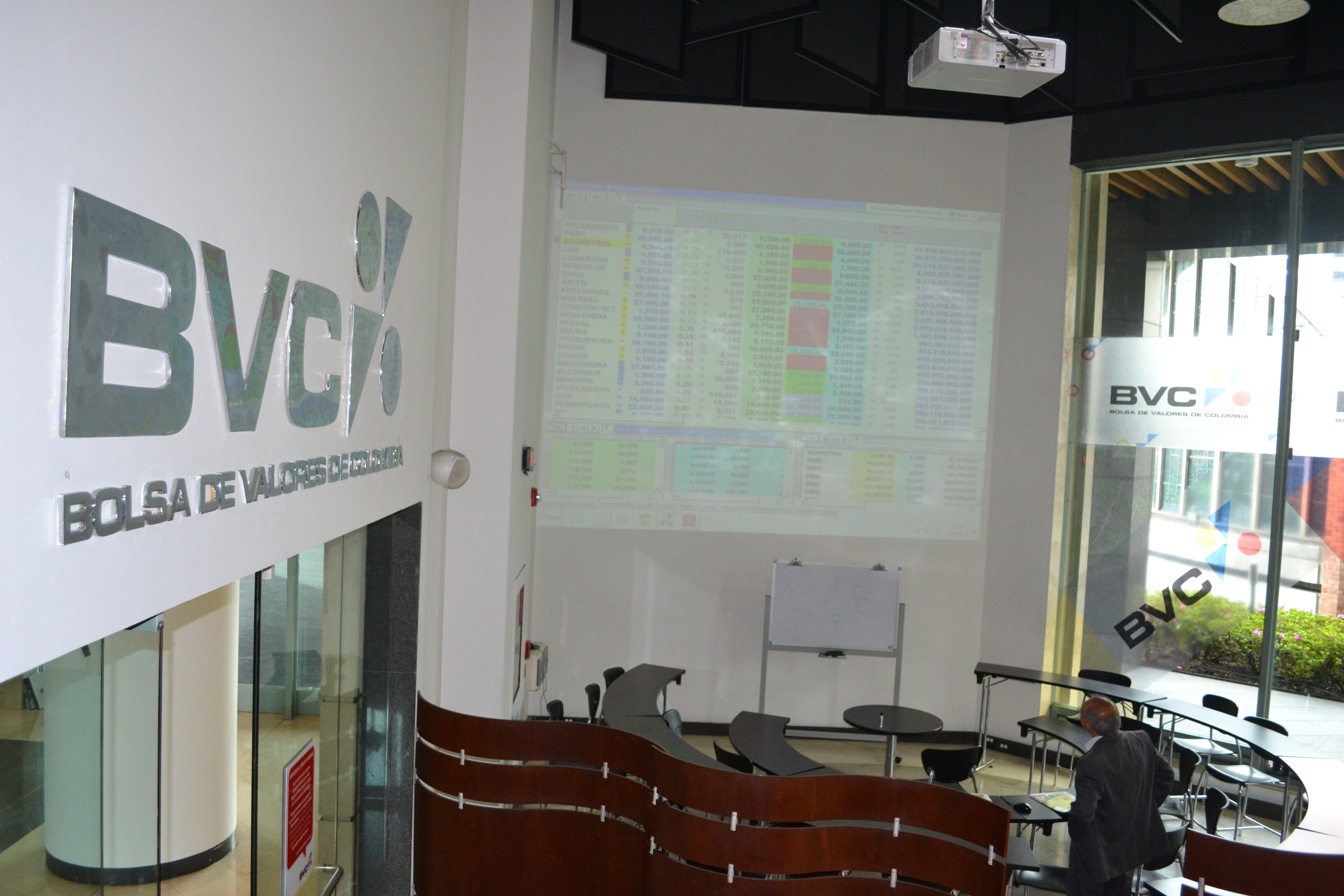Interview with Juan Pablo Córdoba - President of the BVC
Under his leadership Colombia's stock exchange has expanded rapidly. LatAm INVESTOR caught up with Juan Pablo Córdoba to find out what's next for the BVC.

At present there is not much liquidity in the smaller companies of the Bolsa de Valores de Colombia (BVC). How do you plan to expand the market and make it more interesting for our readers?
It’s a big and exciting challenge, every single day we are trying to improve the overall quality of the market place, which we believe will boost liquidity. We are working on many fronts. We are improving the way that security lending works and have launched new regulations on custodian services. We are also introducing the first market maker programmes next year. With our own listed companies we have launched an Investor Relations initiative that aims to improve communication between investors and listed companies. We realised that Colombian companies were not up to speed when it comes to communicating with investors and getting their story out.

One way to do this is through promotion. But another, more fundamental way is through the communication efforts of the companies. Obvious things like quarterly conference calls, reports and making investor information available in English. Many of our issuers have a basic IR page in Spanish, but not one in English for international investors. So we produced a new set of voluntary guidelines that go beyond what is mandated by the regulations and were pleased to see that 29 issuers complied.
Many of Colombia’s biggest companies are privately-owned and seem reluctant to list on the stockmarket. How much of a barrier to the BVC’s future growth is this cultural trend?
It is a huge challenge and it is part of the reality of how corporate structure is in Colombia and rest of Latin America. Many large family-owned companies here are private companies and their way of doing business doesn’t involve making it public. We have an outreach programme, called Colombian Capital, which involves talking to these companies and letting them know about the options available to them through capital markets. We also firmly believe that if a company is going to join market there has to be a strong business case. It can’t just be because listing is in fashion or because that’s what everyone else is doing.
These firms are looking outside of Colombia and across the borders. They are no longer targeting growth of 10% per year but looking to double or triple the size of their company in the next five years. And that… requires a different form of funding…"
Longer-term I think that the culture within some of these businesses is slowly changing. New generations of businesspeople are working in these companies and families are becoming more open to the idea of listing. It is something that will gradually change over time. Another factor that is making the board members of these companies talk about the BVC is growth. These firms are looking outside of Colombia and across the borders. They are no longer targeting growth of 10% per year but looking to double or triple the size of their company in the next five years. And that means acquisitions and establishing operations in other countries, which requires a different form of funding. In some cases these companies find that having a liquid stock in the local market creates a good benchmark for them to be able to negotiate elsewhere. In other cases they can use their liquid, local stock to purchase another company. If you have a listed stock which is liquid and has good valuations it becomes a currency for you to fund purchases elsewhere. And the new reality is that Colombian companies are making significant purchases elsewhere. Deals such as Grupo Sura’s $3.7billion purchase of ING’s Latin American assets need to be financed somehow. In that case $1.7billion came from the local equity markets, which shows the important role they play in this new reality. Of course not everyone is making such big purchases but in the last three or four years we have had five equity issues in excess of $1billion. The fact is as companies grow they are going to need to more from equity markets.

At present there are just five non-Colombian firms listed in the BVC. Why should international firms be part of the local stockmarket?
One reason is funding. It used to be that the local market could just handle small deals, say $100million, but that if you needed anything over $500million then you’d have to go to New York or London. That’s no longer the case. We have big local pension funds and issues of $1billion or $2billion are happening. And one advantage for international firms is diversification. Our market doesn’t follow the same cycle as markets in the developed world and that can be very important. Because local investors understand the nature of the firm’s Colombian operations they may have a different risk appetite. That matters because when you have a ‘flight from emerging markets’ or some other type of panic, you may find that your local investors support the share price. Some of the Canadian firms listed on the BVC now have between 10% to 25% of their shares owned locally.
So can we expect to see new international issues soon?
Ha! That’s the difficulty we have with press! These things take time, it’s not something that will happen overnight on a massive scale. We won’t have 50 in 2014 or 150 in 2015, but it’s a gradual process but it will happen. Fifteen or 20 years ago being in New York or London was enough, nowadays it’s not. The recent Financial Crisis has proved to companies that having a diversified source of funding is very important. If you only have access to one source of funding then if something happens you may find that you are denied access to funding for a few years
One of the biggest worries for international investors in Colombia is corporate governance. What are you doing to improve it?
One way we work on this is through the IR initiative that I mentioned earlier. We ask firms to publish their board members, their bios and make it clear who is represent whom. We also ask for the company’s bylaws and statutes to be published so investors know what they’re getting into. Our companies are also committing themselves to having consolidated quarterly reports. That’s a significant step because in lots of other countries you will just get that once a year. Colombia moving to IFRS accounting standards next year, which should also reassure international investors.
We also want to improve what we call relevant corporate actions. We want the timeliness of announcements to be correct. We don’t want an announcement where market participants have the funny feeling that some people knew about it two weeks ago. It’s about making sure that the market has timely information of what’s going on.
Many people believe that the Mercados Integrados Latinamericanos (MILA) venture has not been a success. What do you think?
In terms of the success of Mila I have no doubt. I understand that there are other points of view but in my opinion they are a bit narrow. If the success of Mila is judged by how much traffic goes between the exchanges on day one then OK, we haven’t had lots of volume so far. But that is a very narrow definition of success. Really Mila is a project to encourage growth in the financial markets in the region in an integrated fashion. And what Colombia, Peru and Chile have done is the first step to building more financial integration in the region. For Colombians, Peruvians and Chileans it is easier to invest in the US than it is to invest in neighbouring countries. So you’re changing the way that stuff has been done for hundreds of years and its not easy. But something that wasn’t in the minds of people is now in their minds. They used to think it wasn’t possible but now they realise it is.
Of course it needs to make sense for investors. They are not going to invest in Peru, Colombia or Chile because it’s a nice idea. Motivating people to invest in other countries is difficult, we need to get intermediaries involved and build products tailored to investors. But as a first positive impact this has been a success.
The second thing to recognise is that what we are doing with the regulators is massive. Historically these regulators have always sought to protect their markets and we are asking them to change their mindset and open these markets up. We are asking them to allow the flow of money in and out and to facilitate intermediaries to create new products that the individual regulators can’t control. That is a big step. Regulators here and in other parts of the world are used to only allowing investors to invest in stuff that they have approved. Fortunately regulators have opened up their minds, recognised the challenges we have of bringing companies to market and seen the benefits of offering new products for investors.
As a first positive impact this has been a success
Getting the right products is very important. At the moment we have very little possibility of creating an additional local ETF because we have few issuers. But by combining them with Peru and Chile we can offer sector-specific products. Any energy or finance ETF in Colombia would be restricted to around five names but by working with our neighbours that grows to around 25. That gives much more scope for fund managers to design and offer these products to investors. Of course for this to become a reality intermediaries have to create the products, gain the knowledge, get the back office capability and that takes time. But in terms of opening up minds of people, getting regulators to open up and persuade intermediaries to create products we have come a long way. The launch of the new MILA ETF is an important step in that direction. Of course if no-one else sees this as an opportunity so be it.
The other front is primary issues. The next Colombian issue will be automatically accepted for distributing those shares in Peru or Chile. We only have around five issuers a year so it will take time but to get a regulator to accept that is a massive step. Five years ago people would have though it would be impossible.